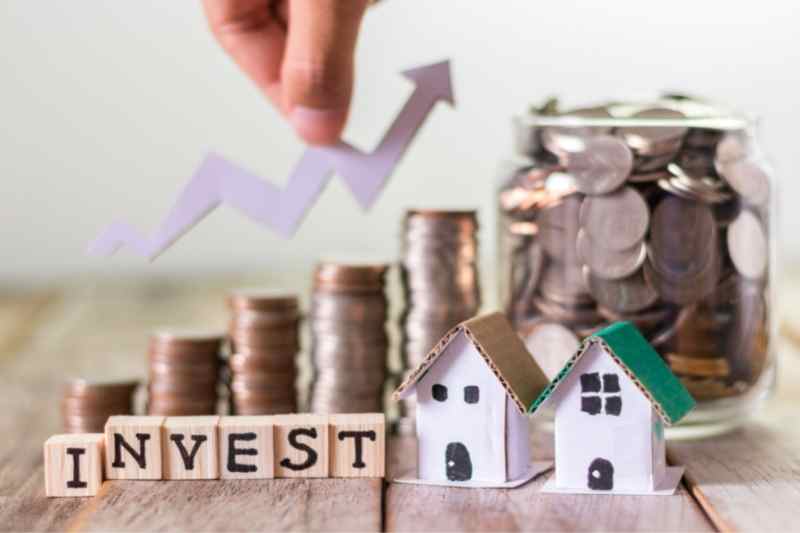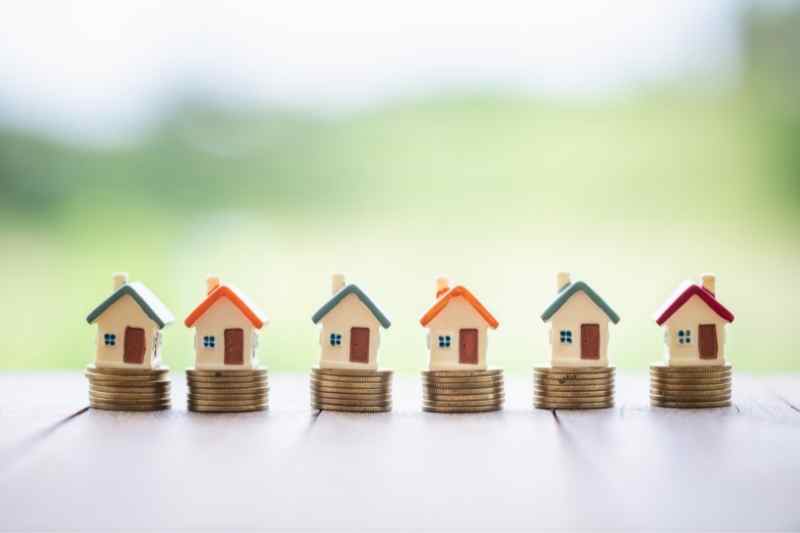Key takeaways
- As a real estate investor, a property’s cap rate is just one of the many ways to evaluate the viability of an investment.
- A “good” cap rate is determined by how much risk you’re willing to take and what rate of return on investment you expect.
- On the flip side, as a property owner, you want to maximize your profit whenever you sell your property. As such, it’s a good idea to increase your NOI, which subsequently increases the cap rate, to sell at a higher price.

Disclaimer: This content is for informational purposes only, you should not construe any such information as legal, tax, investment, financial, or other advice. Nothing contained on our site constitutes a solicitation, recommendation, endorsement, or offer by ButterflyMX or any third-party service provider. ButterflyMX is not a financial adviser. You should always seek independent legal, financial, taxation, or other advice from a licensed professional.
Investing in real estate has been a lucrative financial decision for decades, and that’ll stand true for years to come. One of the most important real estate metrics to consider when investing in a property is its capitalization rate — commonly referred to as ‘cap rate.’
But how much does the cap rate in real estate actually matter? In this guide, we dive into the world of cap rate real estate: what it is, how to calculate it, why it matters, and tips for successfully increasing it.
Navigate this guide:
- What is cap rate in real estate?
- How to calculate cap rate
- Uses and limitations of cap rate in real estate
- 3 tips for increasing your property’s cap rate
What is cap rate in real estate?
In real estate, the cap rate — expressed as a percentage — is the expected rate of return on an investment property. In other words, the cap rate is an estimate of the investor’s potential returns after purchasing or investing in a real estate property.
While the cap rate can be useful for quickly evaluating the relative value of similar properties in the market, you shouldn’t only rely on this figure to determine an investment’s strength. Instead, also consider the property’s age, cash flow history, and mortgage rates.
In short, the cap rate is the property’s unlevered (without considering debt such as loans) return and a quick evaluation of its investment risk.
Is it better to have a high or low cap rate?
In theory, a high cap rate means the investment is riskier, while a low cap rate means less risk. As a rule of thumb, investments with lower cap rates are perceived as having lower risk levels, more predictable cash flow streams, and greater potential for appreciation.
Having said that, every real estate investor is different: Some are more tolerant of risks than others. Factors like investment portfolio strategies, entry price, and even the investor’s age determine the level of risk they’re willing to take.
So, you’re probably wondering, what is a good cap rate for real estate?
In general, a low cap rate of 3-5% means that the asset has a lower risk with a higher value. Meanwhile, a “higher” cap rate of 8-10% reflects a lower price, higher risk, and higher return. There isn’t a definitive “good” cap rate for real estate. Some aggressive investors won’t touch properties with cap rates less than 8%, while others think rates between 4% and 5% are optimal.
The bottom line is that a “good” cap rate is relative to the real estate market (location, type, size) you operate in and your investment portfolio.
How to calculate cap rate
The cap rate is calculated by dividing the property’s net operating income (NOI) by the current market value, multiplied by 100.
Cap rate formula:
Cap rate = NOI / current market value x 100
As a reminder, the NOI is revenue minus expenses at a property. Also, keep in mind that capital expenditures (CapEx) — the costs of maintaining, acquiring, or upgrading physical assets such as new laundry machines — aren’t included in the operating expenses.

Property cap rate example
Now that we’ve gone over what cap rate is in real estate, let’s apply the formula in real life.
Imagine the information below is the monthly revenue and expenses. Once we calculate the NOI, we can get the multifamily cap rate of this property.
For this multifamily property, the monthly NOI is $28,000 ($47,000 – $19,000), which leads to an annual NOI of $336,000 ($28,000 x 12).
Now, let’s imagine the current market value of this apartment building is $3 million:
336,000 / 3,000,000 x 100 = 11.2% cap rate
As the formula shows, the cap rate for this rental property is 11.2%, which is considered a “high” cap rate with higher rates of return. If this property is located in a metropolitan area with high demand, it could be considered a good investment. But if it’s on the outskirts of town with lower demand but the same property cap rate, you might want to reevaluate the investment.
Watch how ButterflyMX works:
Uses & limitations of cap rate in real estate
In short, cap rates are largely determined by estimated future income.
So: Does the real estate cap rate really matter?
While cap rates can help you quickly evaluate the viability of an investment, keep in mind that they can be unsteady and vary significantly.
Only you can decide what’s a good cap rate for you since it greatly depends on two things:
- What you’re looking to get out of an investment
- How much you’re willing to risk for it
That being said, there are both uses and limitations of real estate cap rates. Let’s look at some of them.
Good uses of cap rates:
- Getting a rough estimate of future profitability and rate of return on an investment property
- Deciding which property to invest in within a similar market
- Gauging the general risk of an investment
Limitations of cap rates:
- Only one financial model out of many for evaluating investments
- Can’t be used on vacant or vacation/short-term rental properties
- Doesn’t apply to new or less than five-year-old properties because NOI is undetermined

3 tips for increasing your property’s cap rate
Understanding cap rates is just one of the many metrics and tools you’d want to use when investing in a property. However, if you’re a property owner or manager wanting to sell your property down the line, having a higher cap rate generally acts in your favor.
And the key to having a high cap rate is having a high NOI.
So, here are three tips for increasing your NOI and, in turn, cap rate:
1. Retain your property staff
By now, you likely know that it costs more to obtain new tenants than to retain existing ones. But did you know that the same is true about property staff?
When a staff member quits, you need to exert time and energy recruiting a replacement. But that’s only the start. Once you hire someone new, it takes a great deal of time and dedication to train them. What’s more, all the valuable property knowledge and special staff-tenant relationships also leave with the staff member.
Your staff plays a crucial role in keeping current tenants happy and getting new ones to sign leases. So, retaining property staff (especially the good ones) for as long as you can is a great way to keep your NOI high.
2. Add proptech devices
In today’s technologically advanced world, adding proptech solutions to your building is a must if you want to increase your NOI and, in turn, your cap rate. Proptech simplifies and streamlines building processes for both tenants and staff.
For instance:
A cloud-based access control system that syncs with your property management software automatically assigns tenants building access permissions. Your property staff doesn’t have to painstakingly spend long hours manually importing tenants’ information into the system. Better yet, choosing a system with a mobile app eliminates the need for handing out physical access credentials.
With this added free time, staff can focus time and energy on finding more significant and high-touch ways to engage and retain tenants. And with both high-tech and high-touch services provided, your tenants will renew their leases year after year — reducing or entirely cutting turnover costs.
3. Implement amenity fees
Undoubtedly, no one wants to pay more in rent. But in both commercial and residential communities, tenants will pay extra fees for desirable amenities.
To offer tenants the most desirable amenities, send out a survey that assesses their demographics, wants, and needs. From the survey results, you can determine the most desirable amenities among your tenants.
As a reminder, renters are willing to pay more for amenities and services that add convenience and simplicity to their daily lives. This can’t be truer for modern tenants: They want to live and work in a smart, well-connected building with rich amenities.






